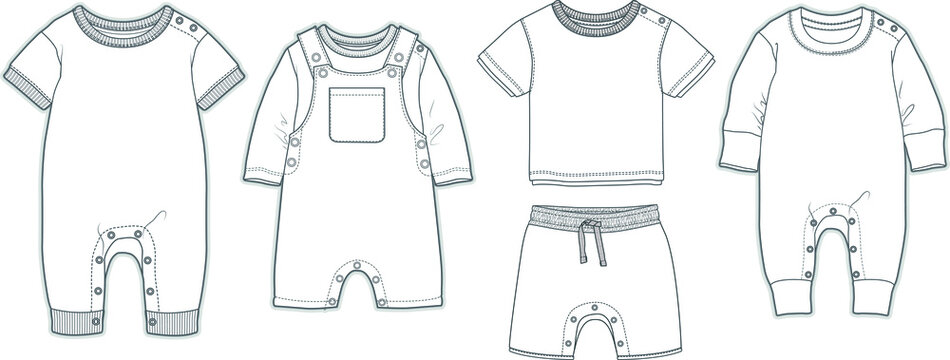
1. Types of Baby Clothing
Onesies: One-piece garments that cover the torso and often snap at the crotch for easy diaper changes.
Bodysuits: Similar to onesies but may have long sleeves or different closure types.
Sleepers: Footed pajamas that keep babies warm during sleep.
Tops and Bottoms: Separates like shirts, pants, shorts, and skirts.
Dresses and Rompers: One-piece outfits suitable for warmer weather or special occasions.
Outerwear: Jackets, sweaters, and coats for layering in colder climates.
Accessories: Hats, socks, mittens, and bibs to complement outfits and protect babies.
2. Materials and Fabric Choices
Cotton: Soft, breathable, and hypoallergenic; ideal for baby skin.
Organic Fabrics: Free from chemicals and pesticides, ensuring safety for sensitive skin.
Blends: Cotton-polyester blends for durability and ease of care.
Wool: Provides warmth but requires special care to avoid irritation.
Fleece: Soft and lightweight, suitable for cooler temperatures.
Safety Considerations: Avoid fabrics that may cause allergies or irritation; prioritize comfort and ease of movement.
3. Design and Fashion Trends
Comfortable Fit: Loose, stretchy designs that allow freedom of movement.
Bright Colors and Patterns: Stimulate visual development and add cheerfulness to baby apparel.
Gender-Neutral Options: Increasing trend towards unisex designs and colors.
Eco-Friendly Fashion: Growing demand for sustainable materials and manufacturing practices.
Seasonal Themes: Designs and colors that reflect seasonal trends and holidays.
4. Care and Maintenance
Washing: Use gentle detergents suitable for baby clothes; wash at appropriate temperatures.
Drying: Air dry or use low-heat settings to prevent shrinkage and maintain fabric integrity.
Ironing: Iron at low temperatures to avoid damaging delicate fabrics.
Storage: Store clean clothes in a clean, dry place to prevent dust and allergens.
5. Market and Consumer Preferences
Quality and Safety: Parents prioritize safety, comfort, and durability when choosing baby clothing.
Brand Reputation: Trustworthy brands known for high-quality materials and design.
Cost Considerations: Balance between affordability and quality; willingness to invest in durable items.
Online and Offline Retail: Increasing preference for online shopping with easy returns and exchanges.
Customization: Demand for personalized baby clothing with names, initials, or special messages.
6. Personality Development
Expression: Baby clothing can reflect parents' values, cultural heritage, and personal style preferences.
Comfort and Confidence: Well-chosen outfits contribute to baby's comfort and parents' confidence in caregiving.
Conclusion
Baby clothing combines functionality with fashion, ensuring babies are comfortable and safe while expressing personal style preferences. By prioritizing quality materials, thoughtful design, and adherence to safety standards, designers and manufacturers contribute to the well-being and happiness of both babies and their caregivers. Keeping abreast of trends and consumer preferences allows for innovation and creativity in the dynamic market of baby apparel.




